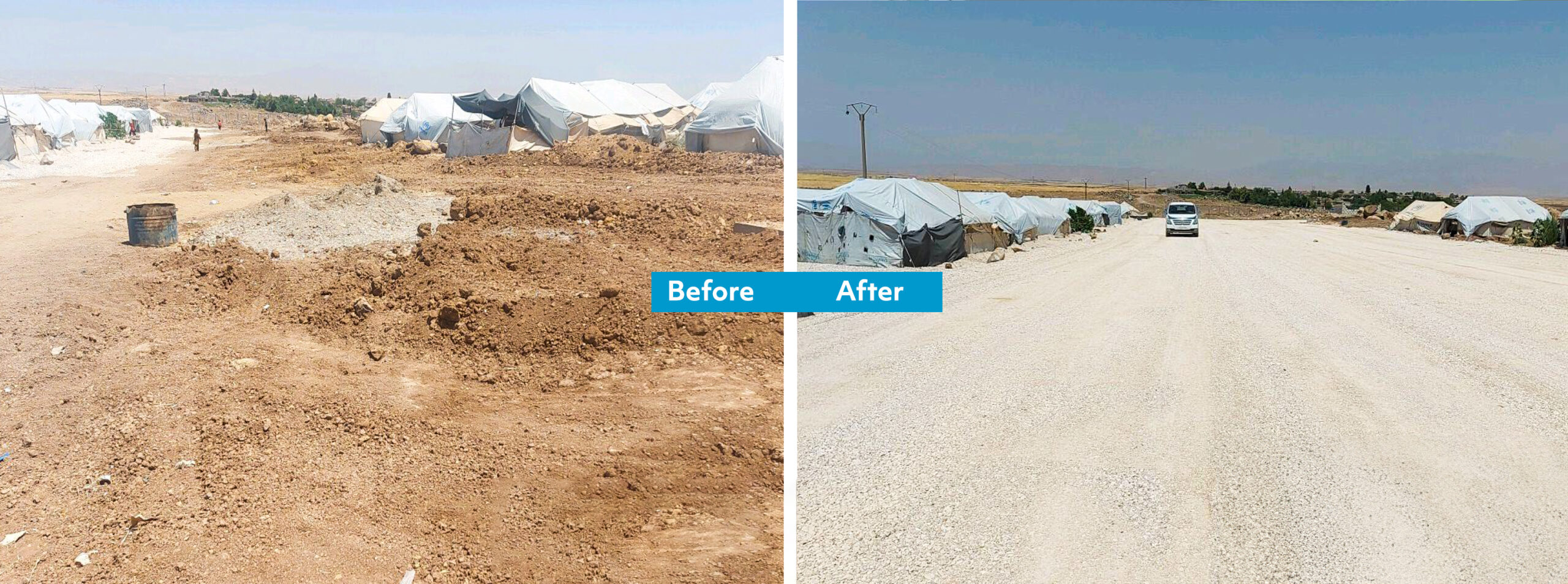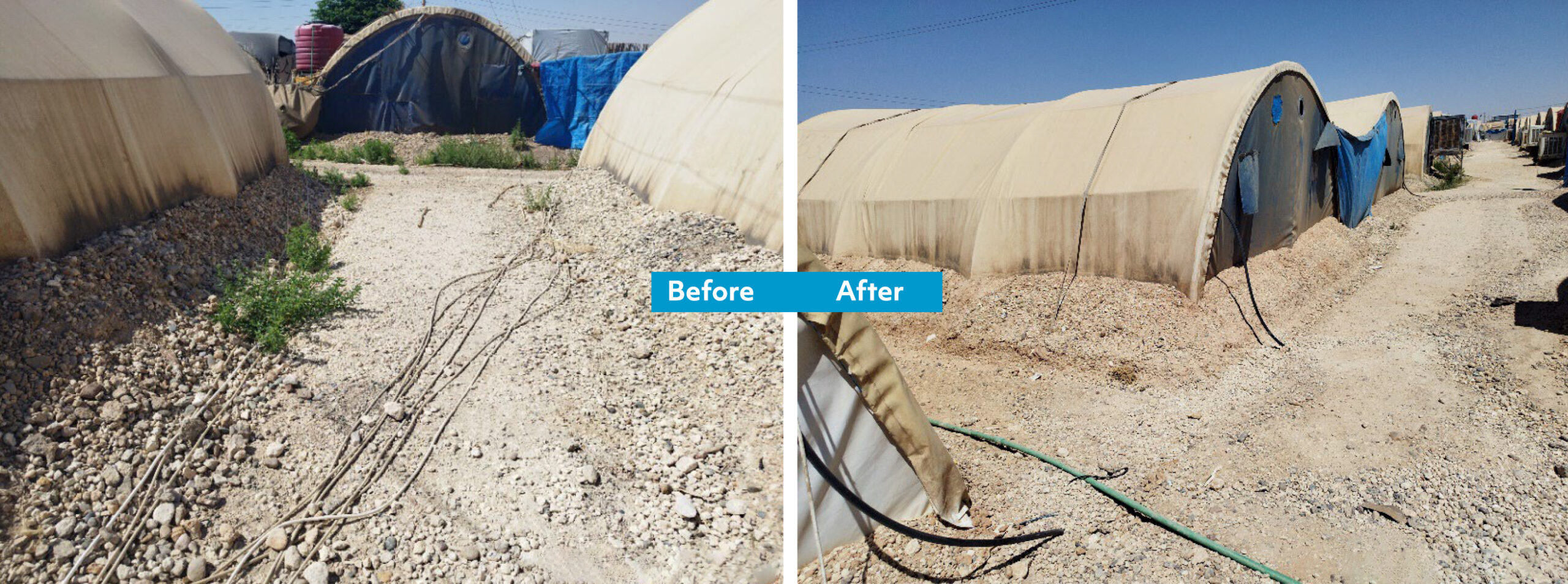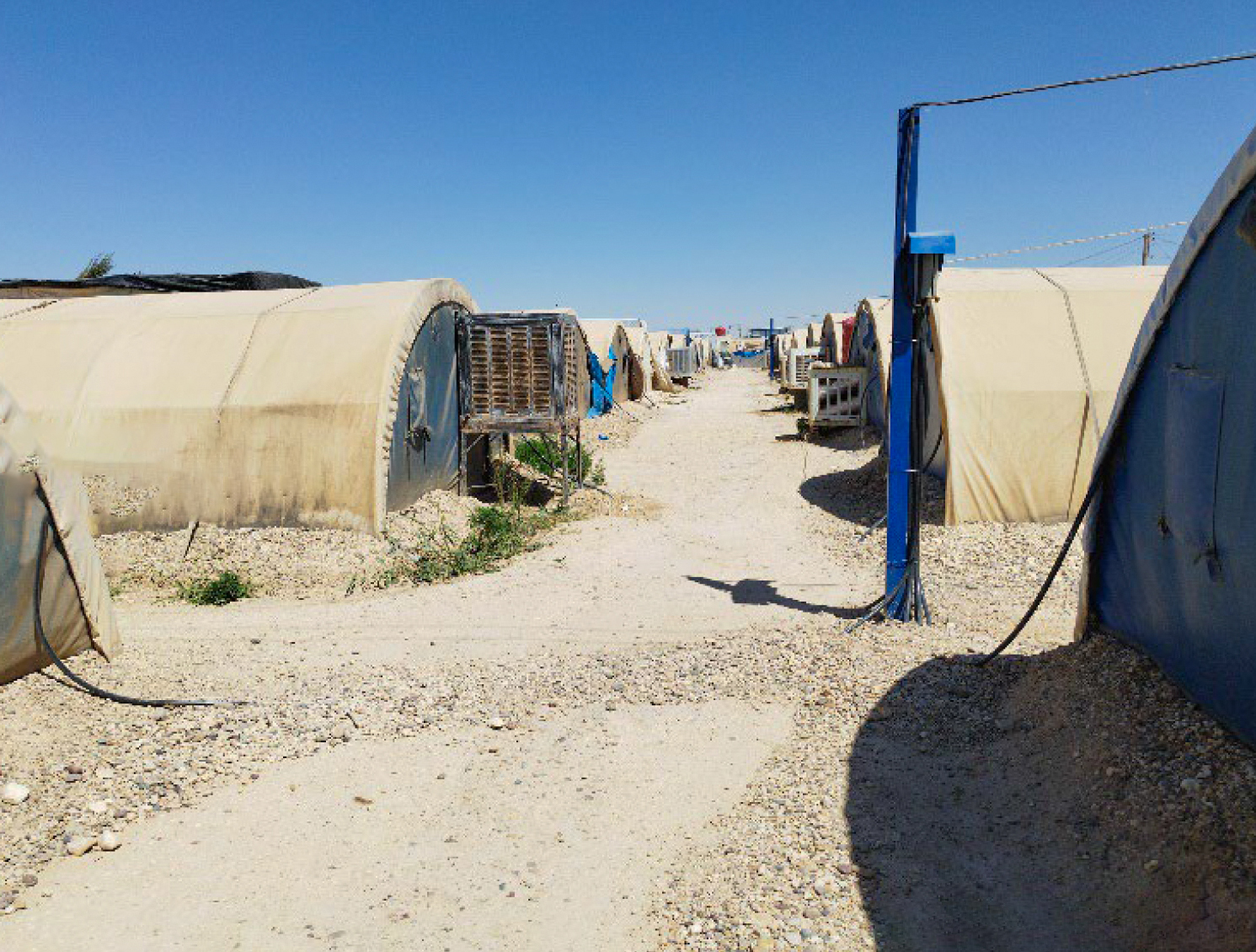The Shelter and Food Emergency Response (SAFER) program, funded by USAID Bureau for Humanitarian Assistance, is improving displacement camp conditions in northeast Syria. Listening to community feedback helps us prioritize humanitarian aid beyond food, water, and shelter which are just as critical to survival and dignity.
Adapting our programming to meet community needs, we worked with camp residents to find solutions that would make daily life easier. Overall, our common goal was to reinforce safe, clean, and accessible camp conditions for thousands of displaced families.
Securing Clean Hygiene Facilities
Everyone has the right to clean water and sanitation. In one camp with more than 6,000 residents, the community requested improvements to the latrines and washrooms. Cumbersome stairs, leaky pipes, and faulty doors made residents feel unsafe. The SAFER team rehabilitated 44 washrooms and latrines within the camp, reducing risks to the elderly, women, and children.

Facilities in the camp, before and after renovations.
Hussein, a resident who often speaks up for community needs, said, “Elderly people such as my mother, unable to navigate stairs to reach the bathrooms, can now conveniently access the facilities. Also, this project has also reduced the amount of maintenance for water and sewage networks, which has impacted the cleanliness and health of the camp residents.”
SAFER’s intervention transformed the washrooms into safe and sanitary spaces with new doors, lower steps, and improved piping.
Hanaa, also living in the camp, shared, “The internal partitions and doors needed repairs and didn’t offer the protection we needed as women. However, after the project was carried out, they became much more suitable and secure for us to use.”
Rehabilitating Roads
Navigating throughout the camp on dusty, uneven roads was becoming a challenge for many residents. Without a proper maintenance schedule, the roads were falling into disrepair.

A major road in the camp, before and after reconstruction.
Responding to the community’s need, the SAFER put together a rehabilitation plan for the main roads so people could walk more comfortably.
Hekmet, a camp resident living near one of these roads, was joyful about the road repairs. She said, “I used to spend long hours transporting water from the distribution site to my tent on a muddy and dusty path that would soil my clothes. Now, everything is accessible, and my visits to my relatives have become easier.”
Residents can now walk safely throughout the camp without fear of large holes and muddy conditions. The new roads not only help residents move around easier but also better connect people in the camp and encourage them to engage more in community activities.
Khalaf approached the team during construction. He stated, “The services in this area have become the best in the camp, and our lives have become easier to access services, especially getting to the bread distribution points.”
Repairing Electrical Networks
In another displacement camp, an unsafe electricity network put the lives of its residents, especially children, at risk. With exposed cables susceptible to the elements, injuries and tent fires were a constant concern.

Electrical wires in the camp, before and after being reinstalled for safety and efficiency.
The SAFER set out to completely revamp the network. Damaged cables and panels were replaced and a secure aerial network was installed, completely shielded from the weather and placed away from tents and out of children’s reach.
Laith lives in a sector of the camp serviced by the new network. “We used to endure frequent issues and breakdowns… and faced constant fear and anxiety, especially for our children,” he said. “However, things have taken a dramatic turn now. We can move freely among the tents without any concerns.”
Four thousand people are now living without fear of electrical hazards. Support from the SAFER team instilled confidence in the camp’s residents, knowing that their well-being was a top priority.

Electrical wires in the camp have been rerouted to utility poles and underground to keep residents out of danger.
Maha, a mother, expressed her relief: “We used to live in a terrifying setting with cables scattered haphazardly. Walking around the tents at night, we were afraid of a potential electrical short circuit that could harm me or one of my children. We now live in a secure environment, free from the fear of any electricity-related accidents.”



